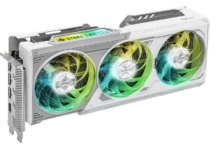Corsair does quite a lot of researching in its labs and most of them are memory related. Its latest investigation covers Intel’s Core i7 platform and how increased clock frequencies with DDR3 memories also contribute to higher processor temperatures. By increasing clock frequencies through Intel’s own XMP (Xtreme Memory Profiles) specification they monitored the difference in temperature, since not only the clock frequency of the memory, but also the voltage for the memory controller is affected.
Since Intel’s Core i7 family uses an integrated memory controller, also the load on the memory affects the processor and this is something you have to be very careful with when overclocking. Corsair took the opportunity to point out that it might be a good idea to invest in the new water cooling kit Corsair H50, but most of all the temperatures are worth a look.
The results show that using high-performance DDR3 significantly increases the heat load generated by a Core i7 processor. The average load temperature of a Core i7-920 processor cooled by the standard Intel HSF (heatsink and fan) was 11°C higher when utilizing 2000MHz C8 DDR3 compared to 1333MHz DDR3 memory. The same PC cooled using the Corsair H50 CPU Cooler maintained average CPU core temperatures up to 24°C lower than the stock Intel HSF, and was able to stably cool the system even when overclocked.
As both CPU VTT voltage and Uncore clock frequency goes up in the processor, the temperature rises and can, without a direct increase in CPU clock frequency, push regular cooling beyond its capability and cause the system to overheat.
An interesting article that might be worth reading for those who enjoy overclocking their DDR3 memories to the limit. The entire document can be found at Corsair’s website (PDF).


















